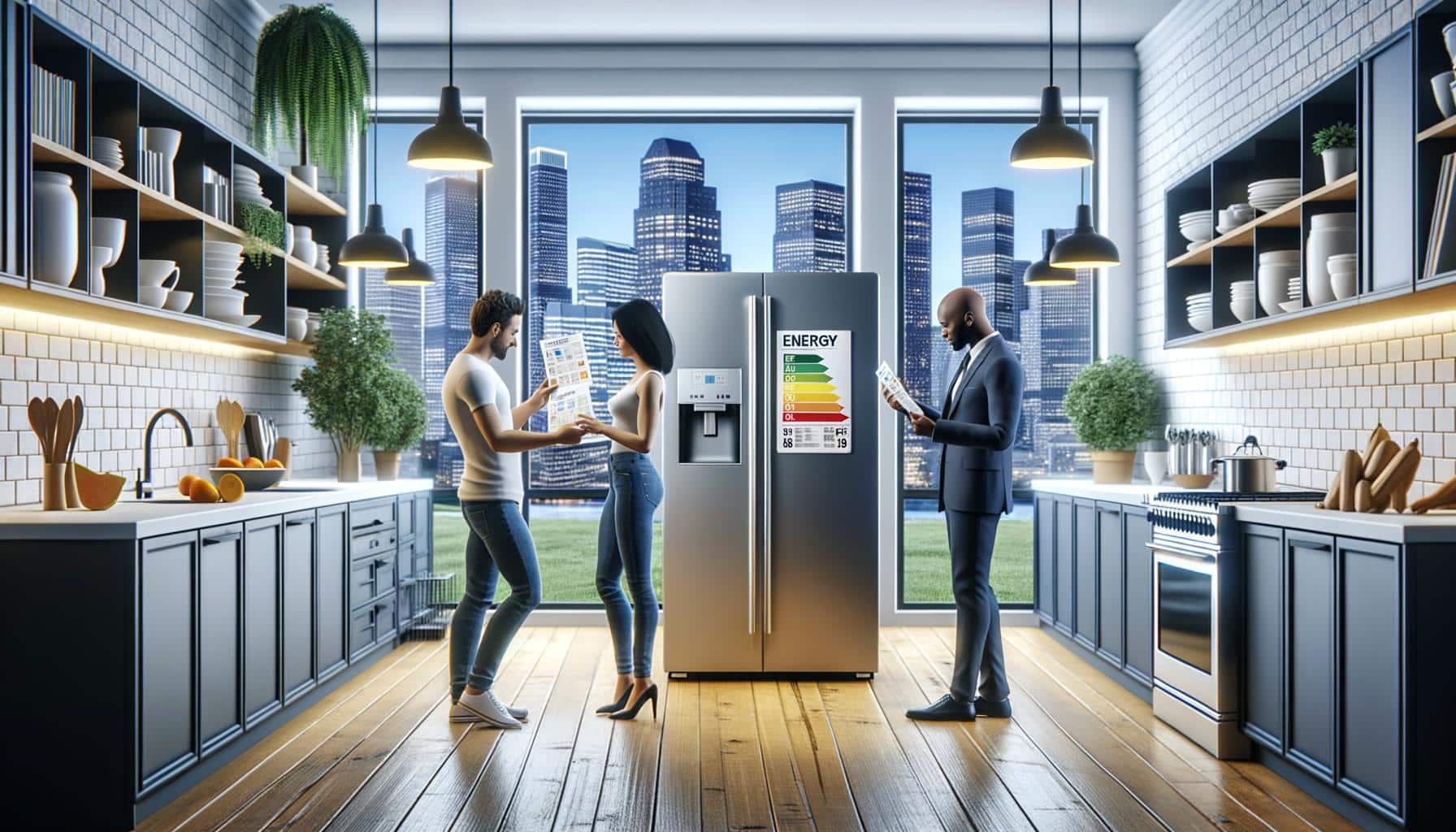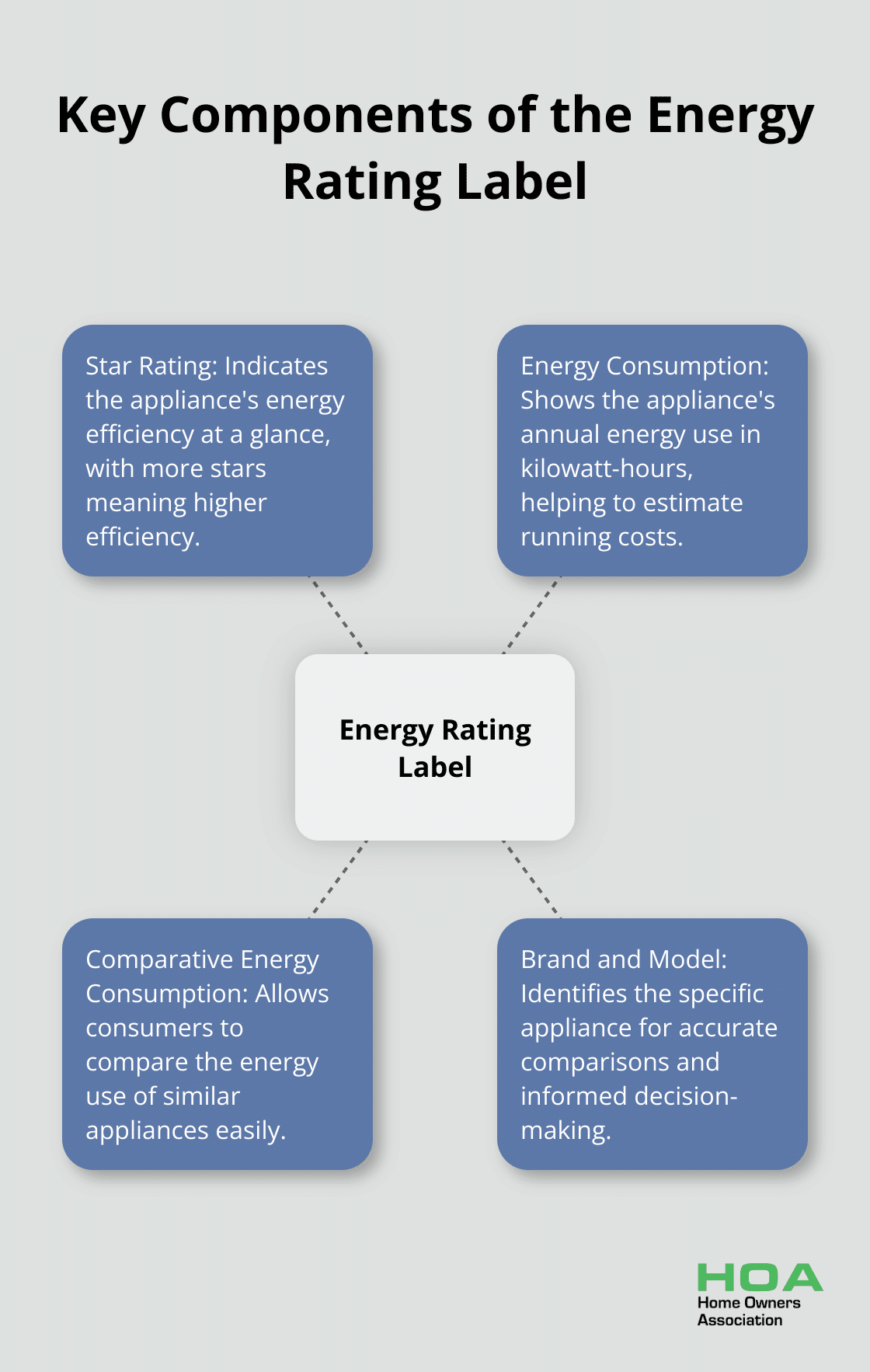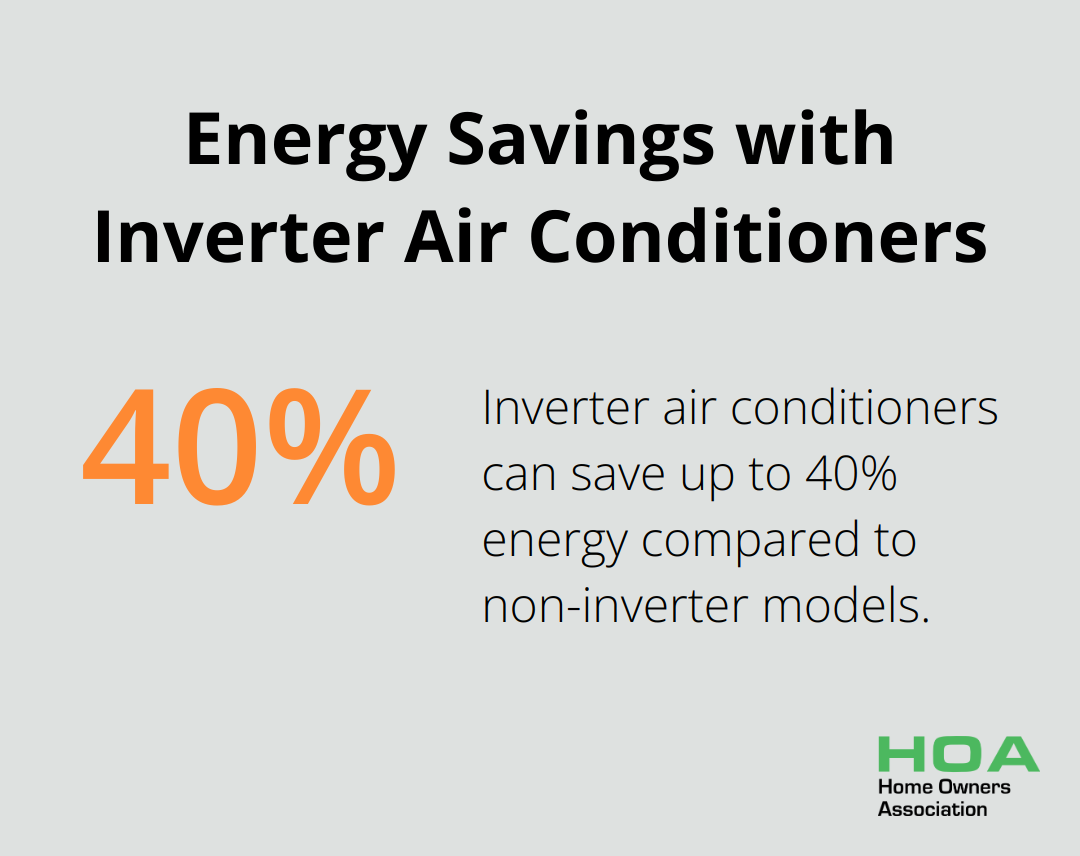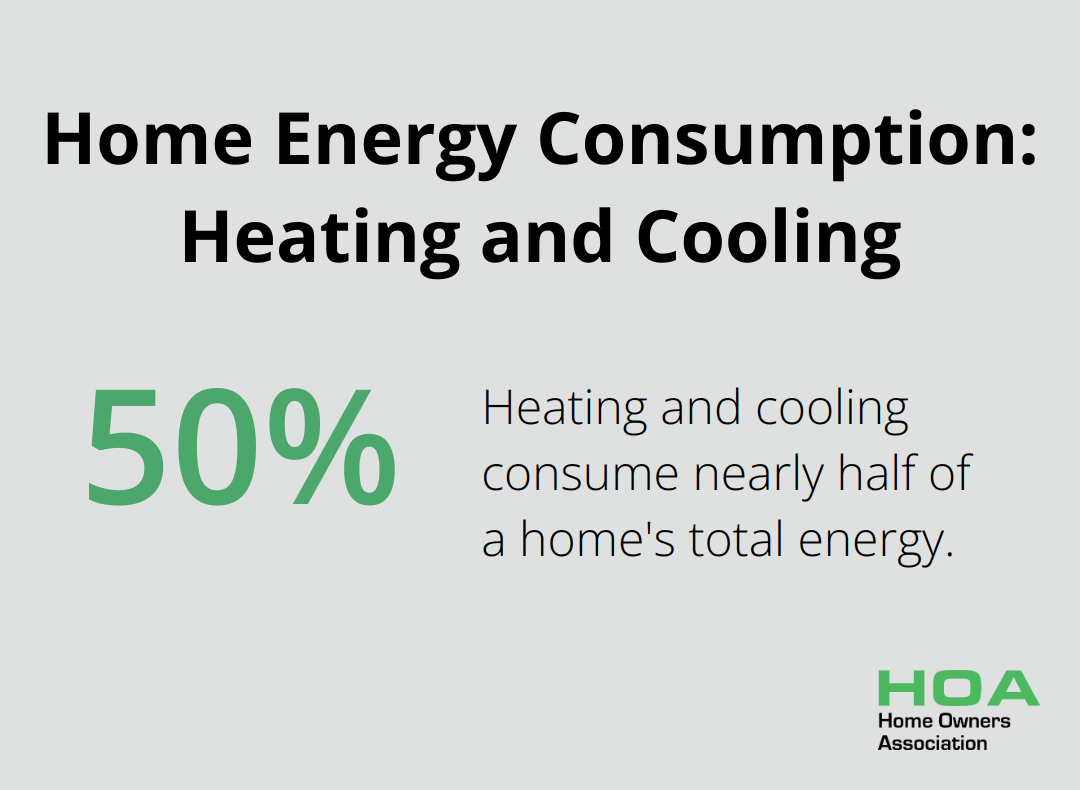
At Home Owners Association, we understand the importance of energy-saving home appliances in reducing utility bills and environmental impact.
Choosing the right appliances can make a significant difference in your home’s energy consumption and overall efficiency.
This guide will help you navigate the world of energy-efficient appliances, from understanding energy ratings to identifying key features that contribute to savings.
Decoding Energy Labels for Smart Appliance Choices
The Australian Energy Rating Label System
The Energy Rating Label system in Australia helps consumers find and compare the star ratings and running costs for energy-efficient appliances. This system allows shoppers to see how much they can save by choosing an energy-efficient appliance.
Key Components of the Energy Rating Label
The Energy Rating Label provides essential information about an appliance’s energy efficiency. To calculate an appliance’s yearly running cost, you can use the Energy Rating Calculator provided by the Australian government. This tool helps you find energy-efficient appliances and equipment for your home or business with estimated running costs.

Energy Star Certification: An International Standard
While Australia uses its own Energy Rating Label system, the international Energy Star certification is also recognised. This certification ensures that appliances meet strict energy efficiency guidelines set by the U.S. Environmental Protection Agency and the U.S. Department of Energy. Selecting Energy Star certified appliances can result in substantial energy savings over time.
Beyond the Stars: Understanding Energy Consumption
When comparing appliances, it’s important to look beyond the star rating. The energy consumption figure directly impacts your running costs and deserves close attention. For instance, upgrading to a more energy-efficient appliance could lead to significant savings over time.
Tools for Informed Decision-Making
The Energy Rating Calculator allows consumers to compare the efficiency of different appliances and estimate their long-term costs. This tool proves invaluable when weighing the benefits of a more expensive but energy-efficient appliance against a cheaper, less efficient model.
As we move forward, it’s clear that understanding energy labels is just the first step in choosing energy-saving home appliances. The next chapter will explore the key features to look for in energy-efficient appliances, including smart technology and water-saving capabilities.
What Features Make Appliances Energy-Efficient?
Smart Technology: The Future of Energy Management
Smart appliances transform home energy management. These devices connect to your home’s Wi-Fi network, which allows you to control and monitor them remotely. Smart refrigerators can alert you when the door remains open, which prevents unnecessary energy loss. They often come with features like energy-saving modes and temperature control algorithms that monitor when you most frequently open and close the refrigerator. Smart thermostats transform energy efficiency by learning your schedule and preferences, then automatically adjusting your home’s temperature for optimal comfort and energy savings.
Many smart appliances also have self-diagnostic features that can detect issues before they become major problems. This can potentially extend the life of your appliance and maintain its energy efficiency over time. When you shop for smart appliances, look for those with energy-saving modes and the ability to integrate with home energy management systems for optimal efficiency.
Inverter Technology: Smooth Operation, Lower Energy Use
Inverter technology revolutionises refrigerators and air conditioners. Unlike traditional compressors that operate at a fixed speed, inverter compressors adjust their speed based on the cooling demand. This results in more consistent temperatures and significant energy savings.
For refrigerators, inverter technology can lead to energy savings compared to non-inverter models. In air conditioners, the energy savings can be even more substantial, with inverter ACs using up to 40% less energy than non-inverter air conditioners when used correctly.

When you consider an air conditioner or refrigerator, prioritise models with inverter technology. While they may have a higher upfront cost, the long-term energy savings can more than make up for the initial investment.
Water Efficiency: Saving More Than Just Energy
Water-saving features in washing machines and dishwashers not only reduce water consumption but also contribute to energy savings. Modern washing machines with load sensing technology adjust water levels based on the size of the load, which prevents water and energy waste.
Look for washing machines with high-spin cycles, which remove more water from clothes (reducing drying time and energy use). Some models can spin at up to 1600 RPM, which significantly cuts down on drying energy.
For dishwashers, sensor-based washing cycles adjust water usage and wash time based on how dirty the dishes are. This can lead to water savings of up to 20% compared to older models. Additionally, look for dishwashers with air-dry or fan-dry options instead of heat-dry, as these use significantly less energy.
The Australian Government’s Water Efficiency Labelling and Standards (WELS) scheme reports that using water-efficient appliances can save the average household up to 35,000 litres of water per year. This not only reduces your water bill but also lowers the energy required for water heating.
Energy-Saving Modes and Programmable Settings
Many modern appliances come with energy-saving modes and programmable settings that can significantly reduce energy consumption. For example, refrigerators often have vacation modes that maintain a slightly higher temperature while you’re away, which saves energy without risking food spoilage. Washing machines and dishwashers typically offer eco-cycles that use less water and energy.
Programmable thermostats for heating and cooling systems allow you to set different temperatures for different times of the day, which optimises energy use based on your schedule. Some smart thermostats even learn your preferences and adjust automatically for maximum efficiency.
As we move forward to explore specific energy-saving appliances for your home, keep these key features in mind. The next section will highlight top energy-efficient options for various household needs, from refrigeration to climate control.
Which Appliances Save the Most Energy?
Refrigerators and Freezers: Cool Savings
Refrigerators often consume the most energy in a home. To maximise energy savings, select a model that fits your household needs without excess capacity. Inverter refrigerators save energy and run quietly, while non-inverter models use more power and can be noisy.
French door refrigerators with separate freezer drawers minimise cold air loss when opening doors. Models with vacation modes and smart features allow remote temperature control, further enhancing energy efficiency.
Washing Machines and Dryers: Clean and Lean
Front-loading washing machines typically outperform top-loaders in energy efficiency. Front loader washing machines, in general, are more energy and water efficient than top loaders, with some front loaders being rated 5 or 6 stars out of 6.
Heat pump dryers stand out as the most energy-efficient option for clothes drying. These appliances use up to 50% less energy than conventional dryers. While the upfront cost is higher, long-term savings prove substantial. Models with moisture sensors automatically stop the cycle when clothes dry, further reducing energy consumption.
Dishwashers: Efficient Cleaning
Modern dishwashers often surpass hand washing in water and energy efficiency. The most efficient models feature multiple wash cycles, including eco-modes. Sensor-based washing cycles reduce water usage by up to 20% compared to older models.
Dishwashers with air-dry or fan-dry options use significantly less energy than those with heat-dry functions. The E3 Program states that using the eco-mode on your dishwasher can save up to 30% of energy compared to normal wash cycles.
Air Conditioners and Heat Pumps: Climate Control Champions
Heating and cooling consume nearly half of a home’s energy. Reverse cycle air conditioners (heat pumps) excel in both heating and cooling efficiency. These units can be up to 300% efficient, producing 3 units of heating or cooling energy for every unit of electricity consumed.

High star ratings and inverter technology are key features to look for in energy-efficient air conditioners. Smart features like geofencing (which adjusts the temperature based on your location) can further enhance energy savings. The Australian Government’s YourHome guide indicates that a 5-star rated air conditioner can use up to 40% less energy than a 2-star model.
Considering Long-Term Costs
When selecting appliances, factor in long-term energy costs alongside the purchase price. Energy-efficient models often lead to significant savings over their lifetime, despite higher upfront costs. The Energy Rating Calculator (provided by the Australian government) serves as an excellent tool for comparing the long-term costs of different appliances.
Final Thoughts
Energy-saving home appliances offer significant benefits for homeowners. These appliances reduce energy consumption, lower utility bills, and minimise environmental impact. The initial investment in high-efficiency models often results in substantial long-term savings.
Understanding energy labels and efficiency features empowers consumers to make informed decisions. Inverter technology, smart features, and water-saving capabilities contribute to overall household efficiency. Tools like the Energy Rating Calculator help compare long-term costs and benefits of different appliances.
Home Owners Association supports Melbourne homeowners in creating energy-efficient homes. Our expertise and access to trade pricing can enhance your ability to select the best energy-saving appliances for your property. Every choice you make today contributes to a more sustainable future for your household and the planet.





